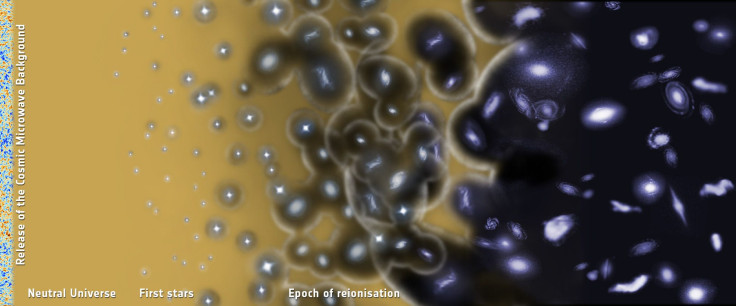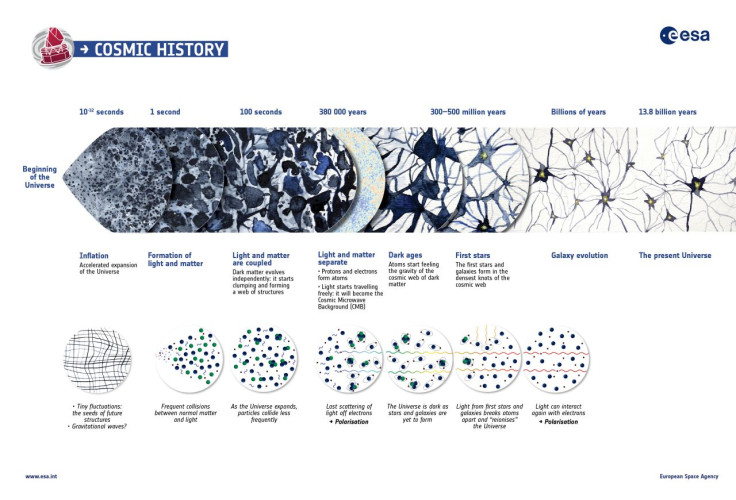First Stars Burst Into Existence Much Later Than Previously Thought, New Analysis Reveals

The universe burst into existence nearly 13.8 billion years ago in an event we now know as the Big Bang.
In the beginning, the cosmos was a hot soup of ionized gas — with electrons and ions of hydrogen and helium buzzing around. Then, roughly 400,000 years after the Big Bang, the universe entered an era of “recombination,” wherein it cooled down enough to allow ions to recombine into atoms. Although this era is believed to be the first time light shone in our universe, it didn’t last long. The universe was soon plunged into the “dark ages” — the time before the birth of the first stars.
When the first generation of stars were born, they emitted strong radiation that ionized hydrogen once again, triggering an era of “reionization” that eventually led us to where we are today — a universe filled with stars and planets made up of a plethora of heavy elements, and the omnipresent Cosmic Microwave Background (CMB), which is the radiation left over from the era of recombination.

Given that the CMB was released at a time when electrons and protons had just joined to form hydrogen atoms, astrophysicists believe observing this “fossil” light can provide vital clues to the history, composition and geometry of the universe we find ourselves in.
Doing this was one of the primary missions of the European Space Agency’s Planck space observatory, and now, new analysis of data gathered by the High-Frequency Instrument (HFI) on board the spacecraft has provided fresh insights into the cosmos’ formative years.
The analysis tells us that reionization of the universe began much later than previously believed, and that the first stars were the main agents of reionization. By extension, it tells us that these stars burst into existence much later than previously thought.
The analysis, detailed in a new study published in the journal Astronomy and Astrophysics , could finally provide definitive answers to what has been a hotly debated topic in recent years. Moreover, it also removes the need to invoke “exotic” and unknown sources to explain the process of reionization in the early universe.
“The highly sensitive measurements from HFI have clearly demonstrated that reionization was a very quick process, starting fairly late in cosmic history and having half-reionized the Universe by the time it was about 700 million years old, ” Jean-Loup Puget from Institut d'Astrophysique Spatiale in Orsay, France, principal investigator of Planck’s HFI, said in a statement released Wednesday. “These results are now helping us to model the beginning of the reionization phase.”
© Copyright IBTimes 2024. All rights reserved.






















